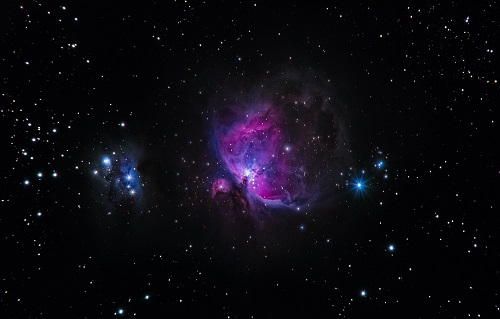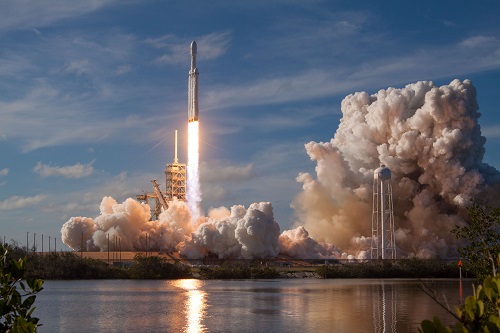When we think of space travel and exploration, we typically think of NASA, maybe Roscosmos, and other government space agencies.
Consumers taking a trip to the moon? Not so much.
At least, that’s the current mindset.
Sure, there’s a commercial space industry. But space tourism is currently reserved for the elite, those who have millions of dollars stashed away in a bank – which can then be withdrawn for extravagant excursions to the International Space Station.
The Business of Commercial Space Travel
From 2001 to 2009, there were 7 space tourists that made 8 flights to the International Space Station. What was the cost? Anywhere between $20 and $40 million. The exorbitantly priced flights have since been discontinued, as there was an increase in ISS crew sizes.
But the costs for at least suborbital “space tourism” will decrease. In fact, a long while back a proposition by British tycoon Richard Branson included a loose plan to give passengers a trip outside of the atmosphere, where they would experience three life-altering experiences:
- 3 to 6 minutes of no-gravity weightlessness.
- A beautiful view of a starfield.
- A breathtaking view of a curved Earth.
How much for the trip? Somewhere between $200,000 and $250,000. It’s still way too much for the common man. But it’s a giant leap forward.
As of now, there is no suborbital space tourism program available. But as it becomes more affordable, corporations will find it as a money-making endeavor.
It appears that Branson is getting very close to launching his first commercial passengers into space. “It will only be about two or three more flights before we’re actually there,” he noted after the second test flight, which he called “a tremendous step in the right direction toward accomplishing our goals.”
Once his company, Virgin Galactic, ensures a safe spacecraft that can go up over 260,000 feet, the company will be ready for take off.
The Need For Competition
Of the utmost importance for space tourism is competition. That is, when there are multiple companies racing to the finish line. And that’s another factor that is surfacing, as Jeff Bezos is close to achieving the same goal that Branson is supposedly reaching.
Bezos has been dumping hundreds of millions of dollars every year (from his Amazon holdings) into Blue Origin, the company he established to build a rocket that will reach zero-gravity conditions.
Blue Origin is in its final testing stages, after launching a human-carrying capsule to 320,000 feet in its eighth successful launch. Its official space tourism launch is slated for 2018.
Next on the list is, of course, Elon Musk – the founder of SpaceX. The company has already sent a dozen unmanned launches to the ISS. Its new craft, “Crew Dragon,” will be able to hold astronauts, already securing a contract with NASA to execute missions.
Mr. Musk isn’t far from sending tourists around the moon. In fact, he claimed last year that two space tourists laid down some cash with SpaceX to secure their spot for a trip around the moon – another mission that is slated for this year.
In addition to established companies who are putting up the fight, there are a number of smaller “rocket startups” who are trying to get into the action.
When Will Space Tourism Become a Reasonable Reality?
The timing at which space tourism will be a reality for us common folk is quite unclear. And it is likely a ways off. Decades, most likely.

And considering it has been decades since anyone has actually landed on the moon, the idea that middle class Americans would be able to exit the Earth’s atmosphere still seems kind of, well, sci-fi-ish.
But as is the case with most industries, when technology advances, and capitalism prevails with a competitive race to the finish, things start to ramp up quickly.
Think about it. For the overwhelming majority of human history, the idea of flying on a commercial flight from the West Coast to the East Coast was unfathomable. Obviously, that’s no longer the case.
Space Adventures is the most renowned private space tourist companies out. And they are accepting applicants to become the next “Lunar Explorers.”
“Only 24 people have ever left Earth orbit and come close to the Moon,” the company notes. “The last people to walk on the Moon were Gene Cernan and Harrison Schmitt, who exited the Moon’s surface on December 14, 1972 and returned in their Apollo spacecraft.”
Since then, not a single person has drifted closer to our moon than low-Earth orbit. “We will change that,” Space Adventures affirms.
Using the Soyuz, the Russian spacecraft used for missions to the ISS, Space Adventures claims they’ll be able to launch two private citizens (along with one professional cosmonaut) around the far side of the moon – just a few hundred kilometers from the surface.
“If you decide to embark on this Circumlunar mission you will see the illuminated far side of the Moon, and then witness the incredible view of the Earth rising above the Moon’s surface.”
“This mission will be one of those small, but very significant steps,” the company praises.
And while the cost of such a trip might be millions of dollars today, there’s no telling what it will cost 20 years from now.
Not to mention, that seemingly highly-desired goal of sending man to Mars.

